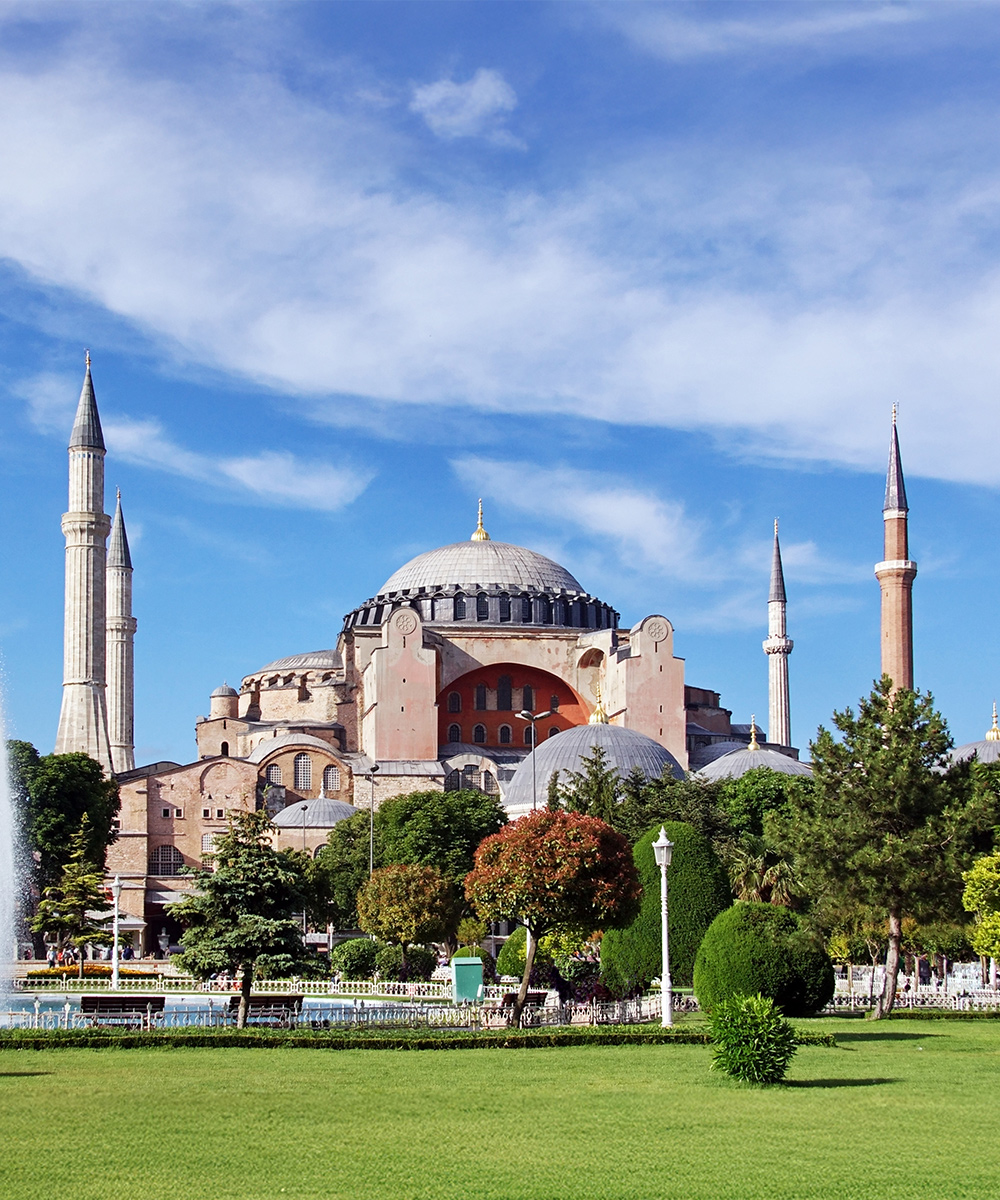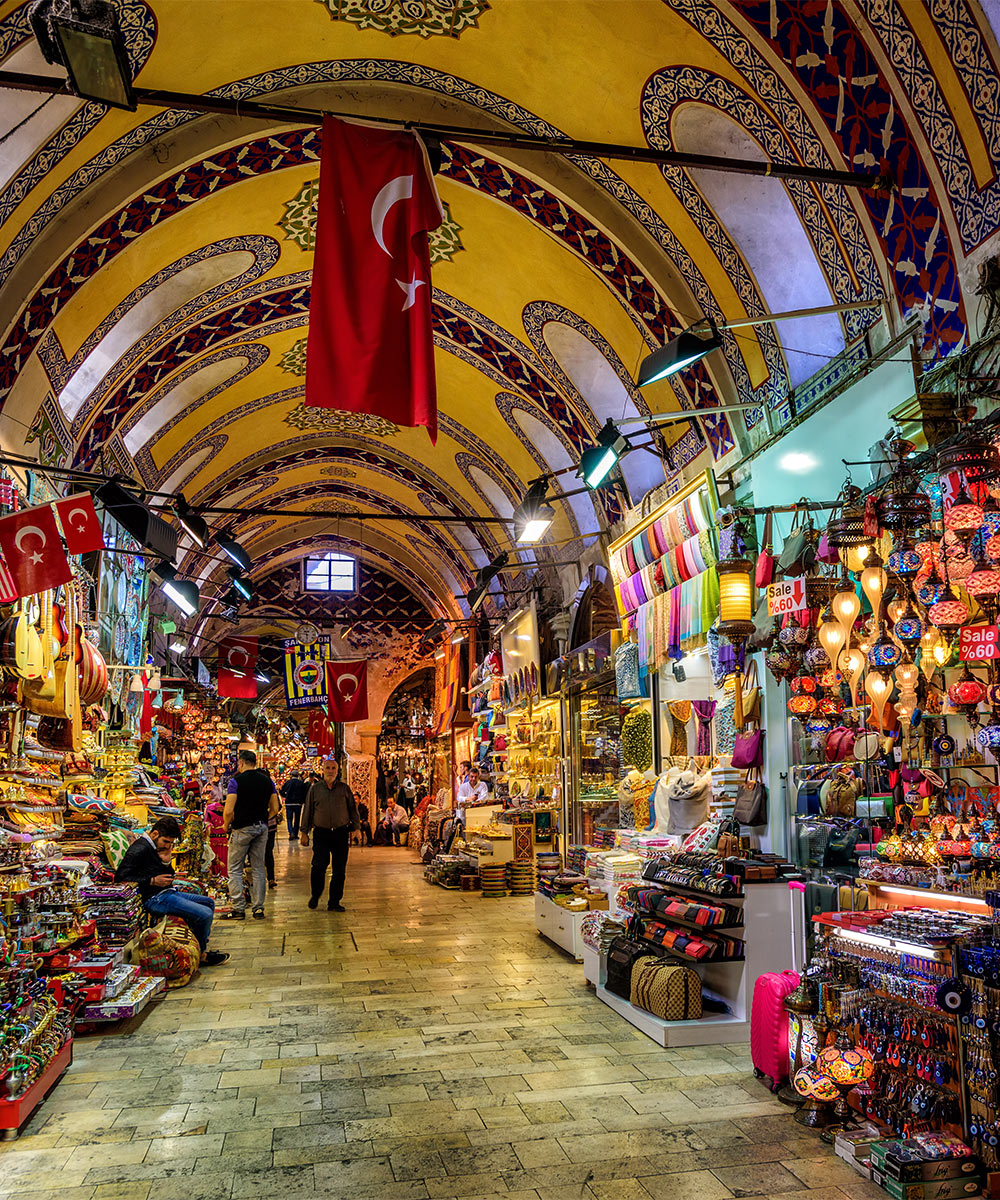Experience Istanbul
Hagia Sophia
Hagia Sophia Grand Mosque (Ayasofya) is one of Istanbul’s most iconic and historic landmarks, oering a unique blend of Byzantine and Ottoman architecture. Historical Signicance Hagia Sophia was built in 537 AD as a Byzantine church, making it over 1,500 years old.
It was the largest cathedral in the world for over 1,000 years.
• In 1453, it was converted into a mosque by the Ottoman Empire.
• In 1935, it was secularized and turned into a museum.
• In 2020, it was reconverted into a mosque.
Architecture and Design
Hagia Sophia’s stunning architecture is a mix of Byzantine, Ottoman, and Roman styles. Its massive dome, which is over 180 feet tall, is considered one of the greatest architectural achievements of all time. The interior is adorned with intricate mosaics, marble columns, and ornate calligraphy.
Cultural and Religious Importance
Hagia Sophia has played a signicant role in the religious and cultural landscape of Istanbul for centuries. It has been a symbol of the city’s rich history and diversity. As a mosque, it continues to be an important place of worship for Muslims.
Visitor Experience
Visitors can explore the vast interior, take in the stunning views of the city from the upper galleries, and learn about the history and signicance of the building through guided tours or audio guides. The surrounding complex also includes several other historic buildings, gardens, and a museum. Overall, Hagia Sophia is an unforgettable experience that oers a glimpse into Istanbul’s rich history, cultural diversity, and stunning architecture


Grand Bazaar
The Grand Bazaar (Kapalıçarşı) is one of Istanbul’s most symbolic and bustling
attractions, oering a unique shopping and cultural experience.
Rich History and Architecture
The Grand Bazaar is one of the oldest and largest covered markets in the world, dating back to 1461. Its stunning architecture features intricate stone carvings, ornate fountains, and beautiful tile work.
Vibrant Shopping Experience
With over 4,000 shops and stalls, the Grand Bazaar oers a vast array of goods,
including:
• Authentic Turkish carpets, rugs, and kilims
• Colorful textiles, fabrics, and embroidery
• Sparkling jewelry, including gold, silver, and precious gems
• Exquisite ceramics, pottery, and glassware
• Traditional Turkish clothing, accessories, and souvenirs
• Be prepared to haggle and negotiate prices – it’s all part of the fun!
Immersive Cultural Experience
The Grand Bazaar is a hub of activity, with a lively atmosphere that’s both fascinating and overwhelming. You’ll encounter friendly vendors, eager to showcase their wares and share stories about their crafts. Be sure to take a break and enjoy traditional Turkish tea, coffee, or snacks at one of the many cafes and restaurants within the bazaar.
Bosphorus Tour
A Bosphorus tour in Istanbul is a unique and unforgettable experience that oers a stunning perspective on the city’s history, culture, and natural beauty.
Scenic Views and Landmarks
The Bosphorus Strait is a natural wonder, connecting the Black Sea to the Sea of Marmara and separating the European and Asian sides of Istanbul. A Bosphorus tour oers breathtaking views of Istanbul’s skyline, including iconic landmarks like the Hagia Sophia, Blue Mosque, and Topkapi Palace. You’ll also see picturesque villages, gardens, and palaces along the shoreline.
Historical Signicance
The Bosphorus has played a crucial role in Istanbul’s history, serving as a major trade route and border between civilizations. Today, the Bosphorus is a major shipping channel within global commerce and active transportation conduit for Istanbul residents traveling between the European and Asian sides of the city.
Cultural Experience
A Bosphorus tour often includes traditional Turkish music, delicious food, and drinks, such as tea, coee, or rakı. You may also have the opportunity to visit local villages, markets, or mosques, immersing yourself in the local culture.
Relaxing and Enjoyable
A Bosphorus tour is a relaxing and enjoyable way to explore Istanbul, oering a break from the hustle and bustle of the city. You can choose from various tour options, including daytime or evening cruises, private or group tours, and dierent types of boats, such as ferries, yachts, or sailboats.


Turkish Bath (Hamam)
A hamam (Turkish bath) is a traditional bathing establishment that originated in ancient Turkey and the Middle East. It’s a place where people go to relax, socialize, and cleanse their bodies.
A traditional hamam experience typically involves:
• Undressing and preparation: You’ll undress and wrap yourself in a pestemal (a traditional Turkish towel).
• Warm-up: You’ll enter a warm room (called the “warm room” or “hararet”) where you’ll sweat and relax.
• Exfoliation and massage: A tellak (male attendant) or natır (female attendant) will scrub and exfoliate your skin, removing dead skin cells and cleansing your pores. You may also receive a massage.
• Rinse and cool-down: After the exfoliation and massage, you’ll rinse o and relax in a cooler room (called the “cool room” or “soğukluk”).
• Final relaxation: You’ll end your hamam experience by relaxing in a peaceful area, often with a refreshing drink.
Benets of a Hamam
Visiting a hamam oers numerous benets, including:
• Deep cleansing and exfoliation of the skin
• Relaxation and stress relief
• Improved circulation and immune function
• Socialization and cultural immersion
Modern Hamams
While traditional hamams are still popular, many modern hamams have adapted to cater to a wider range of visitors. These modern hamams often oer:
• Separate facilities for men and women
• Private rooms and showers
• A range of spa treatments, such as massages and facials
• Refreshments and snacks


